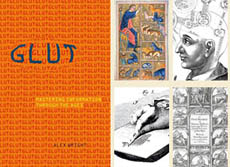Designing Audiences
May 30, 2007
Last night I popped by the AIGA's Designing Audiences panel, an exploration of the changing role of designers in an increasingly user-generated world. A few notes:
- Host Ze Frank (of The Show fame) moderated the discussion, starting with his own experience of unexpected microstardom, in which a trite little video catapulted him to instant celebrity. Since then, he has developed a public persona that seems to evolve in concert with his unusually engaged audience. Frank is a magnetic and funny speaker, whose personality threatened to overwhelm the panelists, but even so he did a solid job of keeping the discussion moving.
- Designer Stefan Bucher talked about his Daily Monster, a wildly popular little site that started out as a personal sketchpad and morphed into an online community as visitors began to take his monsters as a starting point for creating their own. He talked about how designing for user communities isn't so much about giving up control as it is about the skillful use of constraints, and about learning to support and engage users in a creative dialogue.
- Katie Salen presented Karaoke Ice, an Electronic Arts-sponsored project in which a man dressed up as a mute rodent drives a souped-up ice cream truck around San Jose, doling out icicles to passers-by in exchange for karaoke performances. To be honest, I wasn't entirely wowed by the project itself - it all felt a little too precious - but Katie herself struck me as an insightful thinker who had lots of interesting things to say about game design and social performance. She talked about karaoke as an example of the kind of performance that you can't judge out of context - i.e., you would almost never want to listen to a recording of someone actually singing. Karaoke strikes me as a useful metaphor for user-generated content: taken alone, the individual performances are almost universally crappy; but viewed in a larger social context, they add up to something interesting and maybe even important.
- Eric Rodenbeck of Stamen had by far the best demos (although I found Eric himself a little hard to follow - chalk it up to bad mic placement and a tendency to talk too fast). He showed a few whizzy visualization projects including Mappr, Digg and MoveOn, among others. He talked about data visualization as an emerging new medium, suggesting that he thought of designing for this medium as something akin to gardening: that the designer's job is more about creating an environment than a finished artifact.
File under: User Experience
_____________________« MobileCampNYC | Frank Lloyd Wright interview »
GLUT:
Mastering Information Through the Ages
New Paperback Edition
“A penetrating and highly entertaining meditation on the information age and its historical roots.”
—Los Angeles Times
